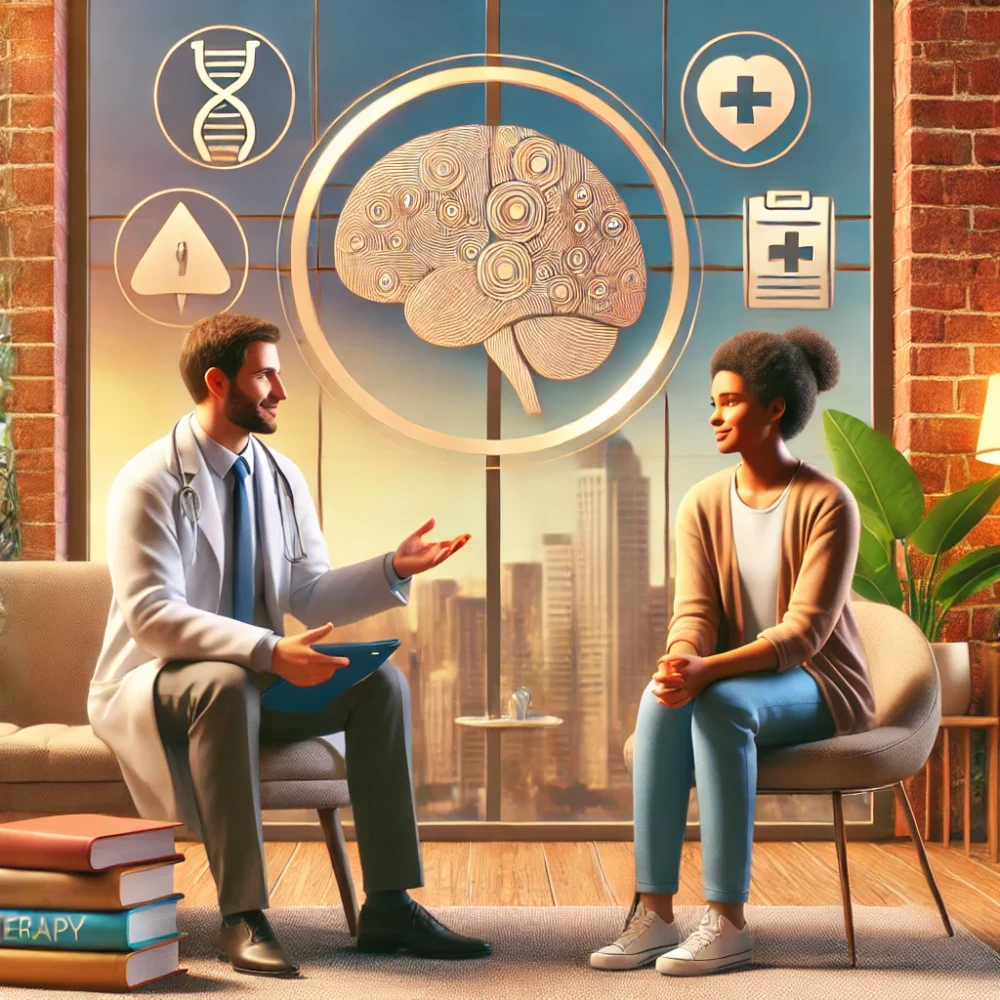Mental health is just as important as physical health, yet many people struggle to recognize the signs of common mental health disorders. Early identification and proper intervention can make a significant difference in managing symptoms and improving quality of life. This article explores some of the most prevalent mental health disorders, their symptoms, and how to recognize them in yourself or others.
1. Depression
Depression is one of the most widespread mental health disorders, affecting millions worldwide. It goes beyond occasional sadness and can severely impact daily life.
Signs and Symptoms:
- Persistent sadness or low mood
- Loss of interest in previously enjoyed activities
- Fatigue or lack of energy
- Changes in appetite or sleep patterns
- Difficulty concentrating or making decisions
- Feelings of worthlessness or excessive guilt
- Thoughts of self-harm or suicide
How to Identify It:
If someone has been experiencing these symptoms for more than two weeks and they are interfering with daily life, it may be a sign of clinical depression.
2. Anxiety Disorders
Anxiety is a normal response to stress, but when it becomes overwhelming and persistent, it may indicate an anxiety disorder.
Types of Anxiety Disorders:
- Generalized Anxiety Disorder (GAD): Excessive worry about daily life events.
- Panic Disorder: Recurrent panic attacks with physical symptoms like sweating, rapid heartbeat, and breathlessness.
- Social Anxiety Disorder: Intense fear of social situations and judgment by others.
- Phobias: Extreme, irrational fears of specific objects or situations.
How to Identify It:
If worry, fear, or physical symptoms of anxiety persist for months and interfere with daily functioning, seeking professional help is recommended.
3. Bipolar Disorder
Bipolar disorder is characterized by extreme mood swings that include emotional highs (mania or hypomania) and lows (depression).
Signs and Symptoms:
- Manic Phase: High energy, reduced need for sleep, rapid speech, impulsive decisions.
- Depressive Phase: Fatigue, hopelessness, withdrawal from social activities, suicidal thoughts.
- Mood swings between these phases, sometimes unpredictably.
How to Identify It:
If someone experiences severe mood fluctuations that disrupt daily life, professional evaluation is crucial.
4. Post-Traumatic Stress Disorder (PTSD)
PTSD occurs after experiencing or witnessing a traumatic event, leading to long-lasting psychological distress.
Signs and Symptoms:
- Flashbacks or intrusive memories of the trauma
- Nightmares or sleep disturbances
- Hypervigilance and heightened startle response
- Avoidance of people, places, or situations linked to the trauma
- Mood swings, anger, or emotional numbness
How to Identify It:
If symptoms persist for more than a month after a traumatic event and affect daily functioning, PTSD may be present.
5. Obsessive-Compulsive Disorder (OCD)
OCD involves intrusive thoughts (obsessions) that lead to repetitive behaviors (compulsions) aimed at reducing anxiety.
Signs and Symptoms:
- Repetitive handwashing, checking, counting, or arranging items
- Intrusive, unwanted thoughts causing distress
- Inability to control compulsions despite knowing they are irrational
- Anxiety if compulsions are not performed
How to Identify It:
If compulsions consume a significant amount of time daily and interfere with normal life, professional evaluation is advised.
6. Schizophrenia
Schizophrenia is a severe mental disorder affecting a person’s ability to think, feel, and behave clearly.
Signs and Symptoms:
- Hallucinations (seeing or hearing things that aren’t there)
- Delusions (false beliefs not based on reality)
- Disorganized speech or behavior
- Social withdrawal and lack of emotional expression
- Difficulty concentrating or performing daily tasks
How to Identify It:
If symptoms persist for more than six months and interfere with daily life, seeking immediate psychiatric help is crucial.
Seeking Help and Support
Recognizing the signs of mental health disorders is the first step toward seeking help. If you or someone you know is struggling, consider:
- Speaking to a mental health professional (therapist, psychologist, psychiatrist)
- Reaching out to trusted friends or family members
- Exploring support groups or community resources
- Practicing self-care strategies, such as regular exercise, mindfulness, and maintaining a balanced diet
Conclusion
Understanding mental health disorders and their symptoms is essential in promoting awareness and reducing stigma. By recognizing the signs early, individuals can seek the right treatment and improve their well-being. Mental health matters, and no one should feel alone in their struggle—help and support are available.





